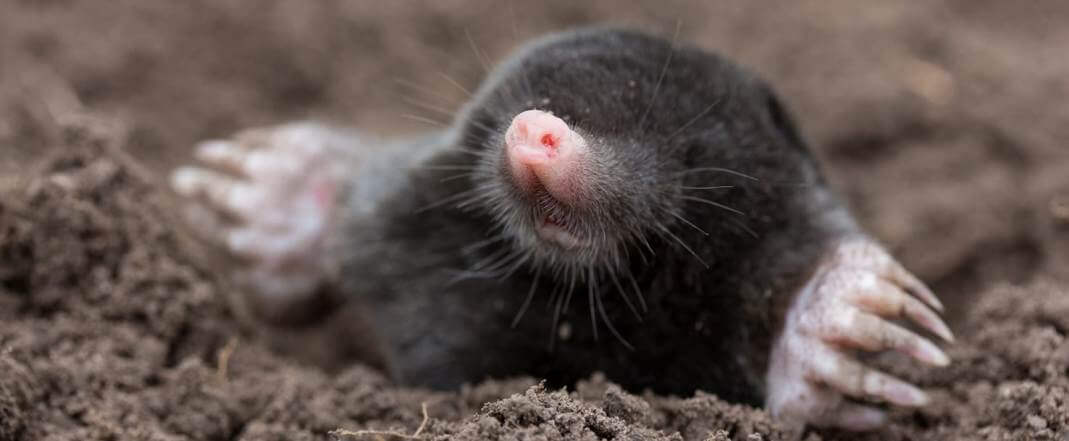
Moles Control
Moles are small subterranean mammals which can be found throughout Canada including British Columbia. Moles are usually classified as a pest because of their tunnelling habit that can be very much destructive to the agriculture, lawn care and gardening. Although they don’t eat plants or plant roots, they indirectly cause damages to the lawns, gardens, yards, parks while they are searching for their food. Usually, their basic diets include ants, grubs, beetles, earthworms and other insect larvae.
The size of a matured mole is generally between 5-7 inches and their color is either grey or brown and it’s breeding time is February to May.
First: Detect the Presence Of Moles
The first and most important step is to properly detect the presence of mole and locate the main mole runways or tunnels.
• Main runways and tunnels can be indicated by mounds of soil created as they construct them.
• To locate mole tunnels in frequent use, clear away a mound of soil and probe for the opening usually a short passage that leads down a few inches to the main tunnel. Place Victor mole traps or Talparid Mole Bait in this tunnel.
How to get rid of Moles
Trapping is the best way to get rid of this animal. Also, you need to constantly monitor your lawn or garden. Besides, it is also essential to eliminate the source of feeding for the moles, in order to get rid of them.
Ways to Get Rid of Moles
Repel or eliminate moles in your yard by following these steps:
• REMOVE THEIR FOOD SOURCE
• AVOID OVERWATERING YOUR LAWN
• APPLY REPELLENTS
• POISON MOLES WITH BAIT
• KILL MOLES WITH TRAPS
Make Your Yard Undesirable
To help prevent mole invasions from occurring in the first place, start by making your yard unappealing to them.
Kill grubs and insects. The main reason that moles invade your yard is to search for food. Their primary food sources are earthworms, grubs, and lawn insects. If no food is available, they won’t find your yard attractive. To help limit the moles’ food supply, use products labeled to control grubs, ants, mole crickets, and other lawn insects.
Don’t water too much. Moles (as well as earthworms) like soft, damp earth, so avoid over-watering your lawn and keep it on the dry side to limit mole and earthworm activity. Remember: Most lawns only need 1 inch of water per week from either an irrigation system or rain to stay healthy, and this will also help limit mole activity.
Apply repellents. Top line pest control will use mole repellents to make your yard undesirable to the furry, tunneling pests. Moles despise the smell and taste of the repellents and of its active ingredient and will relocate elsewhere. Mole repellents should be reapplied to your yard monthly while moles are active in order to stop them from reinvading your yard.
